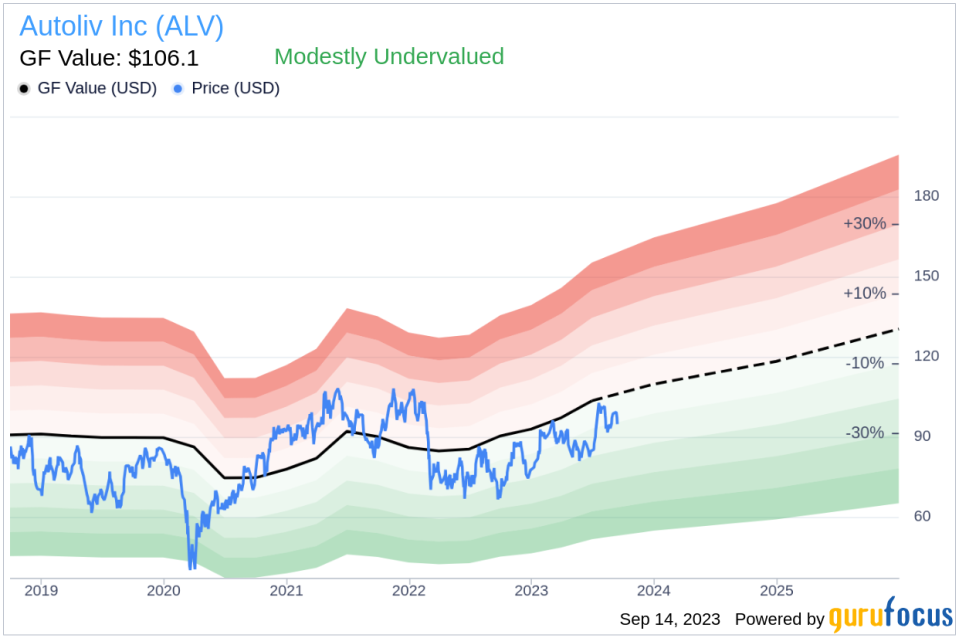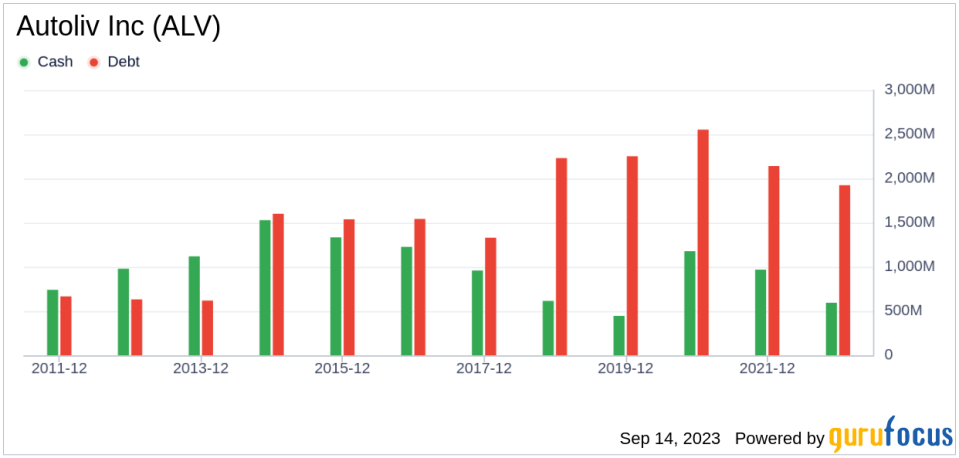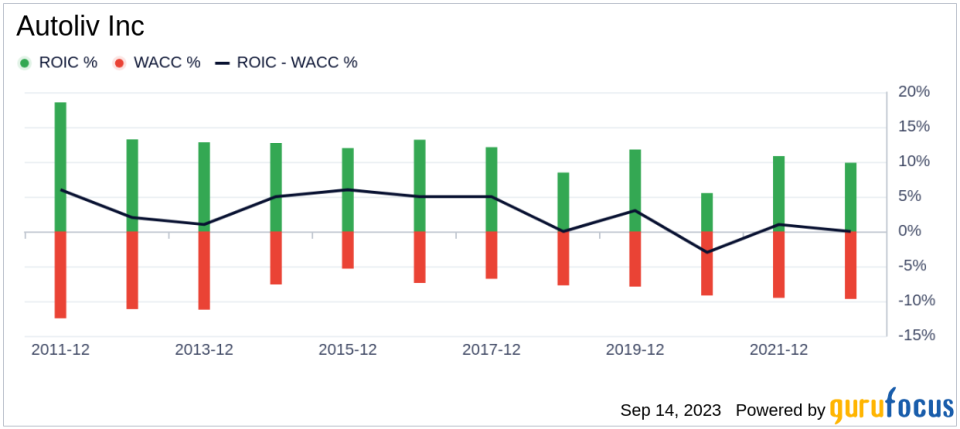Autoliv Inc (NYSE:ALV) has experienced a daily loss of 2.61%, but a 3-month gain of 9.6%. With an Earnings Per Share (EPS) of 4.48, the question arises: Is the stock modestly undervalued? This article aims to answer this question through a comprehensive valuation analysis. So, let’s dive into the details of Autoliv’s financial health, profitability, and growth prospects.
Company Overview
Autoliv Inc (NYSE:ALV) is a global leader in passive safety components and systems for the automotive industry. The company’s products, including seat belts, frontal airbags, side-impact airbags, airbag inflators, and steering wheels, are integral to automotive safety. Autoliv’s largest customers include the Renault-Nissan-Mitsubishi alliance, Stellantis, and Volkswagen, contributing 11%, 11%, and 10% of 2022 revenue, respectively. Geographically, the Americas account for 34% of the company’s revenue, followed by Europe (27%), China (21%), and Japan (8%). With a market cap of $8 billion and sales of $9.80 billion, Autoliv’s stock price stands at $94.83, compared to its GF Value of $106.1.
Understanding GF Value
The GF Value is a unique measure of a stock’s intrinsic value, calculated based on three factors: historical trading multiples, an internal adjustment factor based on the company’s past performance and growth, and future business performance estimates. The GF Value Line provides a visual representation of the stock’s fair trading value. If the stock price is significantly above the GF Value Line, it indicates overvaluation and potential poor future returns. Conversely, if the stock price is significantly below the GF Value Line, it suggests undervaluation and potential for higher future returns.
Based on the GF Value, Autoliv (NYSE:ALV) appears to be modestly undervalued. This suggests that the long-term return of its stock is likely to be higher than its business growth.
Financial Strength
Before investing in a company, it is crucial to assess its financial strength. Companies with poor financial strength pose a higher risk of permanent loss. A good way to evaluate the financial strength of a company is by looking at its cash-to-debt ratio and interest coverage. Autoliv has a cash-to-debt ratio of 0.25, which is lower than 71.24% of 1224 companies in the Vehicles & Parts industry. This gives Autoliv a financial strength score of 6 out of 10, indicating fair financial health.
Profitability and Growth
Investing in profitable companies, especially those with consistent profitability over the long term, is generally less risky. Moreover, companies with high profit margins are typically safer investments than those with low profit margins. Autoliv has been profitable 10 years over the past decade. Over the past twelve months, the company had a revenue of $9.80 billion and Earnings Per Share (EPS) of $4.48. Its operating margin is 6.38%, which ranks better than 60.87% of 1242 companies in the Vehicles & Parts industry. Overall, GuruFocus ranks Autoliv’s profitability at 7 out of 10, indicating fair profitability.
One of the most important factors in the valuation of a company is its growth. Companies that grow faster create more value for shareholders, especially if that growth is profitable. Autoliv’s average annual revenue growth is 1.2%, which is lower than 67.03% of 1201 companies in the Vehicles & Parts industry. The company’s 3-year average EBITDA growth is -1.3%, which is lower than 65.21% of 1075 companies in the industry.
ROIC vs WACC
Comparing a company’s return on invested capital (ROIC) with its weighted average cost of capital (WACC) is another way to evaluate its profitability. The ROIC measures how well a company generates cash flow relative to the capital it has invested in its business. The WACC is the rate that a company is expected to pay on average to all its security holders to finance its assets. If the ROIC is higher than the WACC, it indicates that the company is creating value for shareholders. Over the past 12 months, Autoliv’s ROIC was 9.04, while its WACC came in at 9.6.
Conclusion
In summary, Autoliv (NYSE:ALV) appears to be modestly undervalued. The company’s financial condition and profitability are fair, although its growth ranks lower than 65.21% of 1075 companies in the Vehicles & Parts industry. To learn more about Autoliv’s stock, you can check out its 30-Year Financials here.
To discover high-quality companies that may deliver above-average returns, check out the GuruFocus High Quality Low Capex Screener.
This article first appeared on GuruFocus.



